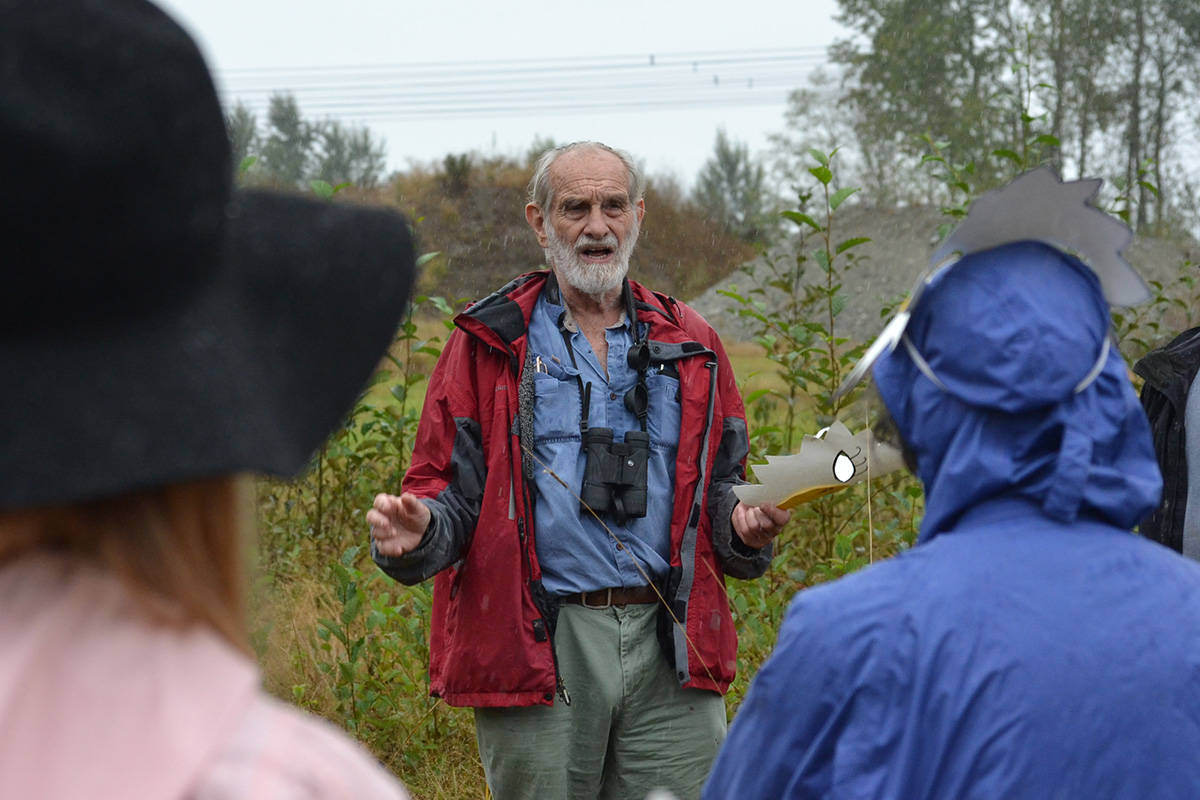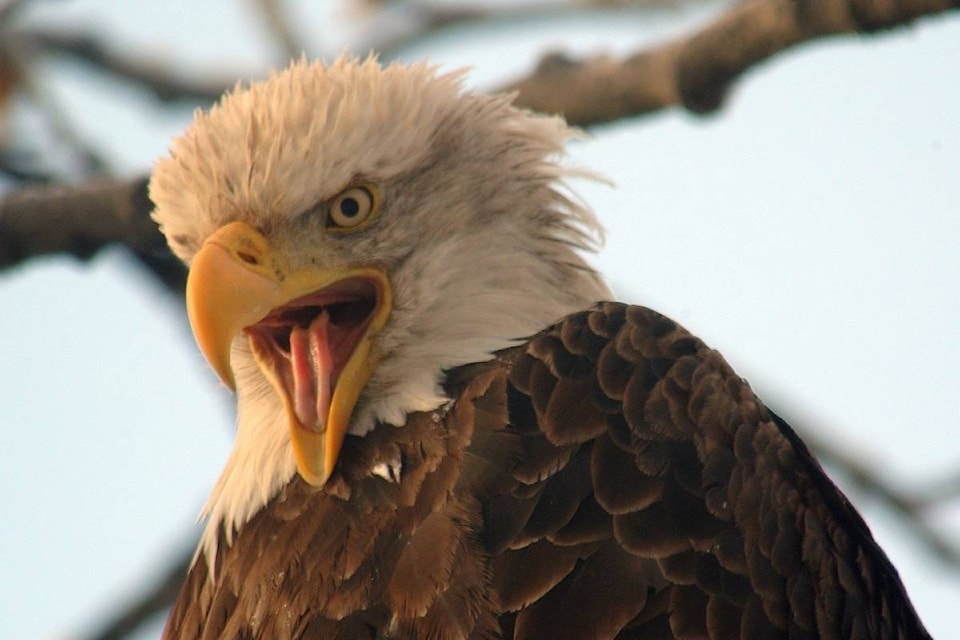One of nature’s most spectacular annual phenomenons is underway across the Fraser Valley, and this year might be one of the best.
Renowned eagle conservationist David Hancock is predicting a record number of bald eagles in Harrison Mills this fall, with “extra large numbers” on the Chehalis Flats.
Related: A guide to eagle viewing in Agassiz Harrison
“So far the criteria are gathering for the perfect storm – a lot of eagles gathering to feast on our spawned out salmon,” Hancock stated.
The breathtaking congregation of white-headed raptors mirrors the preceding migration of salmon returning to from the Pacific to the Harrison, Chehalis and Fraser rivers to spawn and ultimately, die. The dead salmon carcasses, along with the freezing of northern rivers, draws thousands of hungry eagles to the area. In fact, an estimated 35,000 winter in the Valley, many passing through or staying in Harrison Mills.
| Once the northern rivers' fish supply is frozen up, eagles will fly thousands of miles a day to reach the Chehalis Flats for dead salmon snacks. (David Hancock photo) |
In December, 2010, a record number of the birds were counted in a four-kilometre section near the confluence of the Chehalis and Harrison rivers. Over 7,300 were seen in that stretch alone, something Hancock attributes to that year’s record number of pink salmon.
“The growth in 2010 was to do with a giant salmon run,” he said. “In pinks alone we had about 16 million pink [salmon] on the Harrison River. I mean it was unbelievable…We had more dead fish than we’d ever had, so of course we had more eagles accumulating to eat it.”
Hancock estimates that, in total, 10,000 to 15,000 eagles visit the Harrison River each year, and with high numbers of salmon spawning in Harrison Mills, he’s predicting another great eagle turnout this fall.
| The Harrison Mills and Sts'ailes area can see upwards of 10,000 eagles each fall. (David Hancock photo) |
But believe it or not, thousands of dead fish isn’t always enough incentive for the birds to travel from northern B.C. and Alaska. The eagles typically start flying south once they’ve been “frozen out” of the north.
“[In 2010] there was a cold north, and the food was here to hold them. It was the perfect storm in favour of the eagles,” Hancock explained.
Related: VIDEO: Fraser Valley Bald Eagle Festival
But understanding what draws the eagles means first understanding what draws the salmon. The Harrison Salmon Stronghold is the only designated stronghold in Canada – where all seven species of salmon come to complete their life cycles.
“It’s the purity of the water. The Harrison [river], Chehalis [river], Weaver Creek…these are some of the purest, best salmon rivers in all of Canada,” Hancock said. “It’s so pure. It’s clean water. There’s no agriculture up the river polluting it. There’s no big mines upstream, polluting it. No huge run off of sediment.”
The result of pure water and spawning salmon? Bald eagles.
“By default, you get the eagles,” said Hancock. “No where else in the world do you get any species of eagles gathering in this number, they just don’t do it.”
Related: Eagle tree cut down legally a 1st for B.C. city
nina.grossman@ahobserver.com
Like us on Facebook and follow us on Twitter

